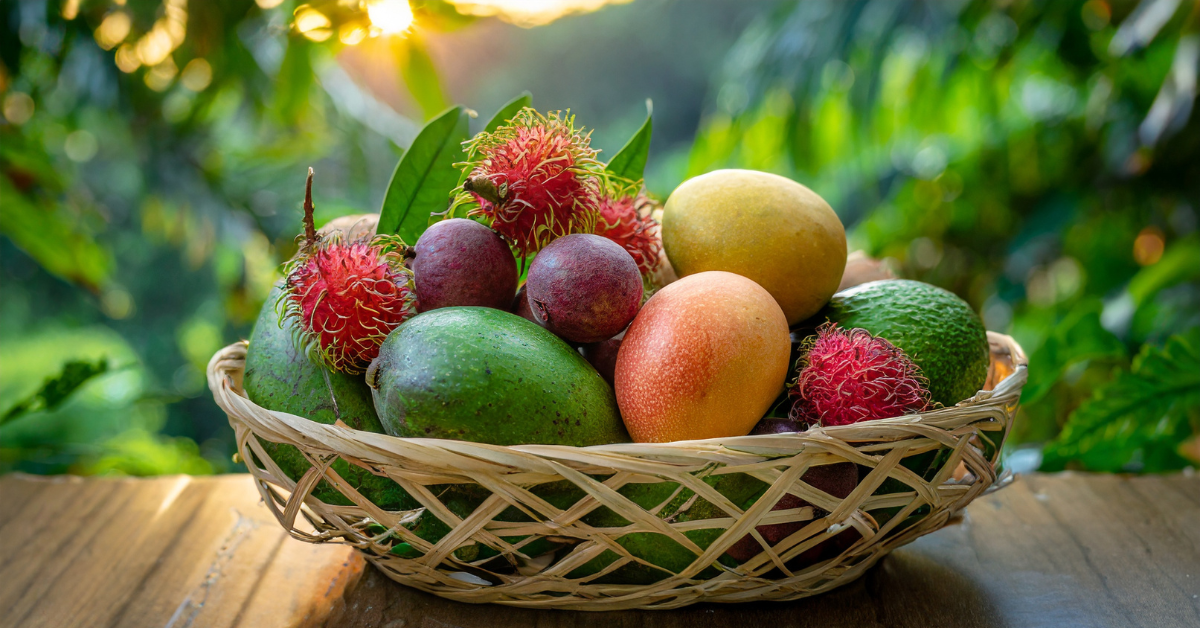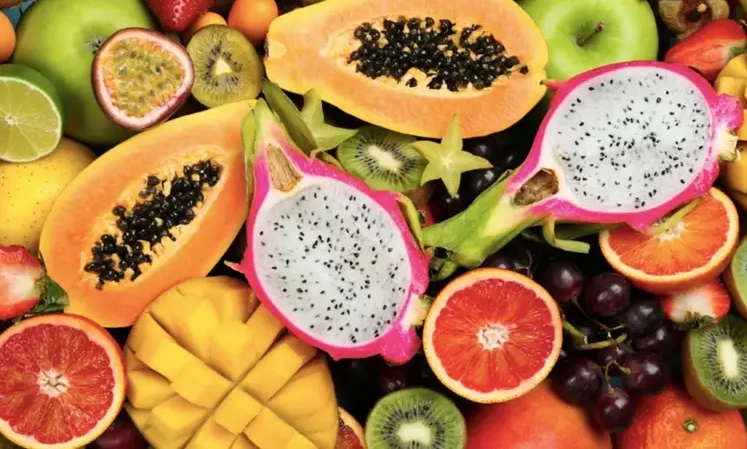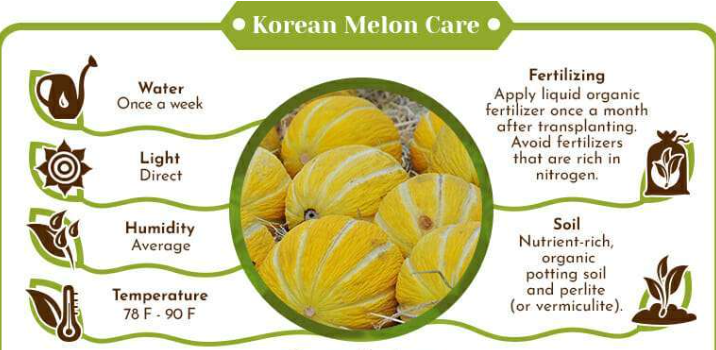
Have you ever had a craving for a dessert that was so strong that a candy bar couldn't satisfy it? For that reason, my friend, you should investigate the hidden realm of the fruits that contain the most sugar on the planet. We're talking about tropical eruptions of honeyed nectar, bursts of lemon sunshine, and creamy, caramelized dreamscapes, all of which are compliments of Mother Nature's candy stockpile.
Forget about mushy apples and tasteless bananas. On the other hand, sweetness is not only about a rush of sugar. In this intricate dance of fructose, sucrose, and ripe perfection, acids play the role of the melody, and textures contribute to the role of the beat. For those of you who are obsessed with sugar, fasten your seatbelts because we are about to embark on a journey around the world in search of the top 15 sweetest gems that your taste buds have ever experienced. Prepare yourself to forego the candy aisle and instead indulge in the luscious, sun-kissed richness of nature's most exquisite offerings!
Top 15 Sweetest Fruits In The World
Brace yourselves, sweet tooths, for a journey around the globe in search of nature's candy! Forget bland grocery store picks; we're diving into the realm of the sweetest fruits, where every bite explodes with flavor and natural sugars. Buckle up for a countdown of 15 tropical treasures that will leave you begging for more:
- 1. Litchis (Lychees) -Hailing from Southeast Asia, these jewel-toned fruits pack a punch with up to 15% sugar! Their translucent flesh bursts with honeyed sweetness, delicately balanced by a hint of citrus. Their unique, bumpy texture adds a playful touch to every bite.
- 2. Passionfruit -This tropical vine fruit from South America has a kaleidoscope of flavors. Its smooth, orange skin belies a pulpy interior that's a tangy-sweet explosion of passionflower, pineapple, and guava. The tiny black seeds add a surprising crunch, making every mouthful an adventure.
- 3. Pomegranate -This ancient fruit from the Middle East is a crown jewel of sweetness. Each jewel-like seed aril bursts with a complex mix of honey, citrus, and a hint of floral. The crunchy seeds add a delightful texture, while the vibrant red juice is a feast for the eyes.
- 4. Mango -The "king of fruits" from South Asia lives up to its name with its intoxicating sweetness. Ripe mangoes offer a creamy, tropical explosion of honey, peach, and a touch of pine. Their buttery flesh melts in your mouth, leaving you wanting more.
- 5. Sapodilla -This Caribbean native is a hidden gem of sweetness. Its brown, bumpy skin hides a smooth, custard-like flesh that oozes honeyed flavor with hints of caramel and vanilla. The lack of acidity makes it incredibly sweet, making it perfect for those who crave pure sugary bliss.
- 6. Mangosteen -This Southeast Asian beauty is often called the "Queen of Fruits" for a reason. Its snow-white flesh melts in your mouth, releasing a delicate, floral sweetness that's reminiscent of lychees and peaches. The hint of tanginess adds complexity, making it a truly unforgettable treat.
- 7. Atemoya -This South American fruit is a custard lover's dream. Its spiky green skin hides a creamy, custard-like flesh that's bursting with pineapple, banana, and a hint of citrus. The sweetness is intense yet balanced, making it a perfect tropical indulgence.
- 8. Cherries -These tiny jewels from temperate regions come in sweet and tart varieties, but the sweetest crown jewels are the Bing cherries. Their deep red flesh explodes with pure, unadulterated sweetness, with a hint of almond adding depth.
- 9. Figs -These Mediterranean delights come in a variety of colors and flavors, but the honey figs are the undisputed kings of sweetness. Their supple, amber flesh oozes with a honeyed sweetness that is slightly rich and earthy. The tiny seeds add a satisfying crunch.
- 10. Persimmon -This Asian fruit undergoes a magical transformation as it ripens. The initially astringent flesh softens, becoming a creamy, honeyed delight. The sweetness is intense, reminiscent of dates and apricots, with a hint of cinnamon adding warmth.
- 11. Guava -These tropical wonders come in a variety of colors and flavors, but the pink guava reigns supreme in the sweetness department. Their juicy, floral flesh explodes with a bright, tropical sweetness that's reminiscent of strawberries and watermelon.
- 13. Papaya -This tropical fruit is a sunshine-packed treat. Its juicy, orange flesh offers a creamy sweetness reminiscent of melon and mango, with a subtle hint of tropical musk. The high water content makes it light and refreshing, perfect for a hot day.
- 14. Jackfruit -This giant fruit from Southeast Asia may not be the prettiest, but its sweet flesh is a hidden treasure. Its stringy texture gives way to juicy, honeyed segments that burst with a tropical sweetness reminiscent of pineapple and banana.
Cultural Significance Of These Sweet Fruits
While their sweetness unites them, each fruit on our list holds a unique place in the hearts and traditions of various cultures. Let's delve into the fascinating cultural significance of a few of these sugary stars:
- The Regal Mangosteen -In Southeast Asia, the mangosteen transcends mere fruit, attaining the status of a cultural icon. Revered as the "Queen of Fruits" for its delicate sweetness and snow-white flesh, it graces offerings to deities and takes center stage in celebratory feasts. In Thailand, the annual Mangosteen Festival in Chanthaburi celebrates the fruit's economic and cultural importance, featuring contests, parades, and culinary delights. Local myths tell of the mangosteen's origin in Queen Nang Nuan's tears, solidifying its connection to royalty and auspicious occasions.
- The Durian Dilemma -While durian's pungent aroma may repel some, its cultural significance in Southeast Asia is undeniable. In Malaysia, the "King of Fruits" symbolizes wealth and prosperity, often gifted during festive occasions like Chinese New Year. Its spiky exterior is said to ward off evil spirits, while its creamy flesh is a delicacy enjoyed in desserts, savory dishes, and even cocktails. Durian festivals celebrate its unique character, attracting both curious tourists and devoted aficionados. However, its powerful odor often restricts its enjoyment to outdoor settings, further adding to its enigmatic allure.
- Litchis: A Symbol of Luck and Romance -In China, litchis symbolize good fortune, fertility, and romance. During the Tang Dynasty, emperors craved litchis so much that they established a "Litchi Post" to transport the fruit swiftly from the south. The vibrant red skin is associated with love and passion, making litchis a popular gift during weddings and romantic celebrations. In Vietnam, litchi wine is a beloved beverage, while in India, litchi juice is enjoyed as a refreshing summer drink. From ancient poems to modern celebrations, litchis weave a sweet thread through Asian cultures.
- The Passionfruit's Tangy Twists -In Colombia, where it's known as "maracuya," passionfruit is not just a fruit but a cultural touchstone. Its vibrant purple skin and tangy-sweet flesh find their way into countless dishes, from refreshing juices and cocktails to savory sauces and desserts. The annual Maracuya Festival in Colombia's El Retiro celebrates the fruit's economic and cultural importance, featuring tastings, workshops, and even a passionfruit queen contest. In some parts of South America, passionfruit is used in traditional medicine and is believed to have calming and digestive properties. This tangy fruit's cultural significance is as diverse and vibrant as its flavor profile.
This is just a glimpse into the rich tapestry of cultural significance surrounding these sweet fruits. Each one holds stories, traditions, and symbolism that speak volumes about the communities they nourish. So, the next time you bite into a juicy mango or savor a tangy passionfruit, remember, you're not just experiencing a burst of sweetness but a piece of cultural heritage waiting to be explored.
Growing Sweet Fruits Tips And Tricks
Ready to bring the tropical sweetness of our fruit countdown to your own backyard? Don't worry; with a little know-how, you can cultivate mini-orchards of sugary delights right at home. Let's explore some growing tips for a few of our sweetest stars
Mangosteen (Southeast Asia)
- Climate -Thrives in hot, humid environments with well-drained soil.
- Soil -Prefers slightly acidic, sandy loam soil rich in organic matter.
- Garden -Plant in a sunny spot sheltered from strong winds. Water regularly, keeping the soil consistently moist but not soggy. Mulch to retain moisture and suppress weeds.
- Container -Choose a large pot with drainage holes and use a well-draining potting mix. Water regularly and provide ample sunlight. Mangosteens take 10–15 years to bear fruit, so patience is key!
Litchis (Southeast Asia)
- Climate -Warm, humid summers and mild winters are ideal. They can tolerate light frost but not prolonged freezing temperatures.
- Soil -Well-draining, slightly acidic soil rich in organic matter is crucial.
- Garden -Plant in full sun with good air circulation. Water regularly, ensuring proper drainage. Mulch to conserve moisture and suppress weeds.
- Container -Choose a large pot with drainage holes and use a well-draining potting mix. Water regularly and provide full sun. Litchis can take 5-7 years to bear fruit, so be patient!
Cherries (temporary Regions)
- Climate -Cool winters and warm, sunny summers are essential for fruiting. Cherries need a period of chilling temperatures in the winter to set fruit buds.
- Soil -Well-draining, loamy soil with a slightly acidic pH (6.0–6.5) is best.
- Garden -Plant in full sun, sheltered from strong winds. Water regularly, especially during fruit development. Prune annually to maintain tree shape and encourage healthy growth.
- Container -Choose a large pot with drainage holes and use a well-draining potting mix. Water regularly and provide full sun. Dwarf cherry varieties are suitable for container growing.
Sapodilla (Caribbean And Central America)
- Climate -Warm, frost-free temperatures are ideal. Sapodilla trees are highly tolerant of heat and drought.
- Soil -Well-draining, sandy loam soil rich in organic matter is preferred.
- Garden -Plant in full sun in a sheltered location. Water regularly during the first year, then allow the soil to dry slightly between waterings. Mulch to retain moisture and suppress weeds.
- Container -Choose a large pot with drainage holes and use a well-draining potting mix. Water regularly and provide full sun. Sapodilla trees can take 8–10 years to bear fruit, so be patient!
Remember, these are just general guidelines. Always research the specific needs of the fruit variety you choose to grow, as sunlight, water, and soil requirements can vary slightly. With a little TLC and the right conditions, you'll be harvesting your own homegrown sweetness in no time!
So go forth, fruit fanatics, and transform your backyard into a jungle of sugary delights! Remember, the sweetest rewards often come with a little patience and care. Happy growing!
Conlusion
Our tour of the world's sweetest fruits ends with sun-kissed flavors and a new appreciation for nature's generosity. The mangosteen's delicate sweetness, the passionfruit's tangy-tart tango, and the litchi's honeyed ecstasy demonstrate the fruit kingdom's diversity and richness. Beyond the sugar rush, we've found these fruits' intriguing cultural tapestry.
Each fruit connects us to the communities and rituals they support, with ancient myths, joyful feasts, traditional uses, and symbolic meaning. Instead of merely a sweet taste, a juicy mango or sour passionfruit is a cultural kaleidoscope ready to be explored. Allow yourself to explore the histories of your favorite fruits and appreciate the rich legacy that enriches our lives. For the daring, the voyage continues.
Use our advice to turn your garden into a sweet orchard! You may harvest your own sweets with a little patience and care, proving your green thumb and reminding you of the joy of growing nature's candy right at home.


